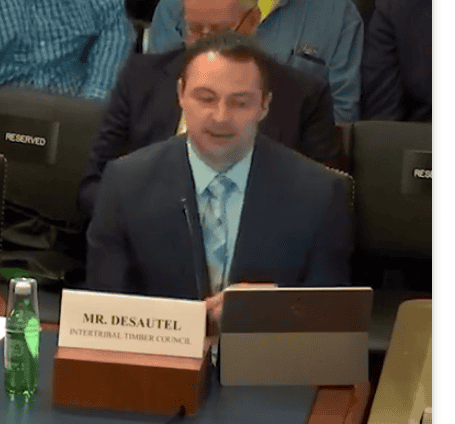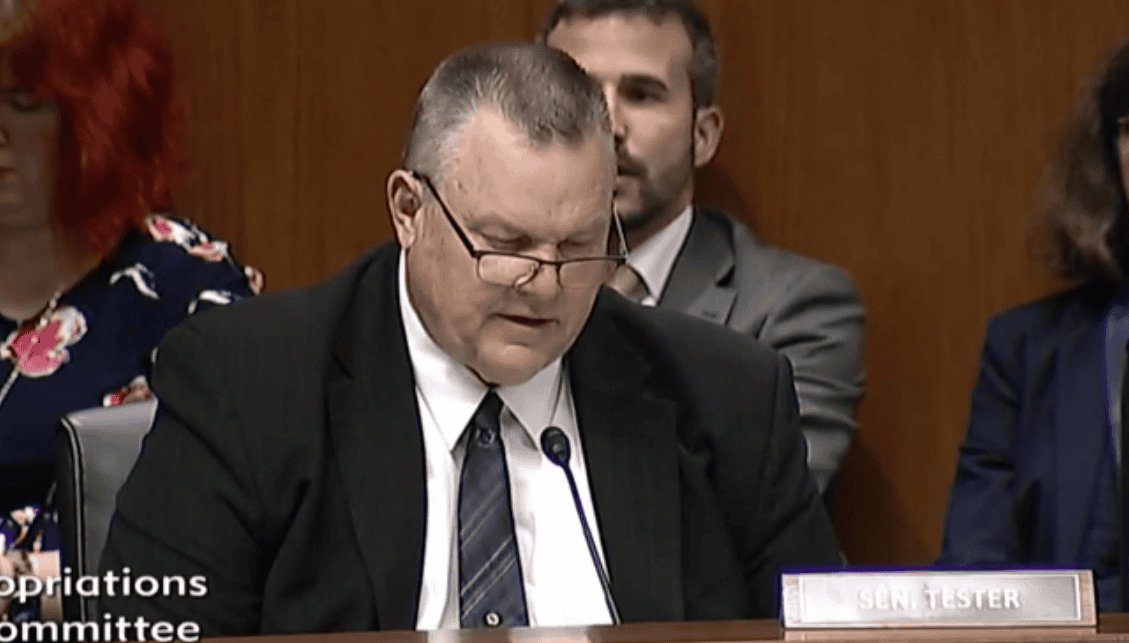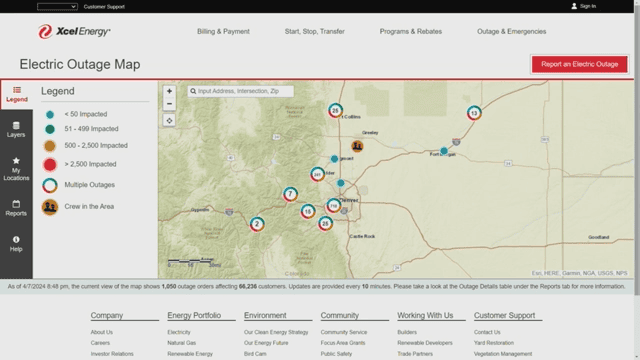Today, Senators Joe Manchin (D-WV) and John Barrasso (R-WY), Chairman and Ranking Member of the U.S. Senate Energy and Natural Resources Committee, sent a letter to the U.S. Government Accountability Office (GAO) requesting a review of the U.S. Forest Service’s practices concerning forest management, land management plans and firefighting equipment.
Below is the letter, with my comments.
America’s wildfire crisis continues to worsen. As your office recently reported, wildfires destroyed more than 12,000 homes, businesses, and other structures each year, on average, between 2017 and 2021. This is more than three times as many than the preceding 5-year period. These wildfires have killed hundreds of people, including 85 fatalities in the 2018 Camp Fire alone, and burned millions of acres. The cost of suppressing wildfires has also risen, from an annual average of $371 million between 1985 and 1990 to $2.85 billion between 2018 and 2022 (an increase of approximately 300% after inflation).
The increasingly devastating outcomes from wildfires in the United States requires a change in how the federal government prepares for, responds to, and recovers from wildfires. Federal agencies have long recognized the need to significantly increase the pace and scale of forest management to reduce the extreme risk posed by wildfires. Nevertheless, efforts to reduce wildfire risk have not been undertaken at the scale necessary to address the crisis. The Forest Service is now recommending that hazardous fuels reduction treatments occur on 50 million acres across the United States over the next 10 years. Although the federal land management agencies have been provided with significant resources to enable this work, both in additional funding and new authorities, increases in proactive forest management have been modest.
In this context, we are writing to request that the Government Accountability Office (GAO) conduct assessments of the following issues:
- Forest management. Active forest management can improve forest health and reduce wildfire risk—all while supporting local economies. Congress has provided authorities and funding to the Forest Service in an effort to speed up these projects. However, the agency continues to face questions about the scale and pace of its timber and hazardous fuels management program. We have heard concerns about the extent to which the Forest Service is using the available resources. For example, the Forest Service’s treatment target for Fiscal Year 2025 is lower than the number of acres treated in Fiscal Year 2023. We ask that your office conduct a review of the Forest Service’s use of existing authorities and existing programs that support forest management projects across ownership boundaries. We also request that your office identify improvements to increase the flexibility of federal funds to facilitate cross-boundary forest management work.
It seems to me that there are several questions:
1. Why are targets lower in 25 than 23? Are these timber and fuels reduction targets (both) or only fuels reduction? ( I could look it up, but someone out there probably knows).
2. Where did the funding go that was intended (perhaps “concerns about the extent to which the FS is using resources” is the same question)? Some rumors suggest that increased staffing happened at the WO and Regional level, not at the Districts where work gets done.
3. What has the Forest Service accomplished with the funding? While stashing the funding in Agreements is useful, it is not the end desired result on the ground.
4. It seems like the Westerman bill has ideas to facilitate cross-boundary work. Perhaps GAO will look at those.
FWIW, my previous experience with GAO reports has been uneven, including giving feedback from the agency. It seems sometimes they have an specific axe to grind.
- Land Management Plans: Of the 128 Land Management Plans maintained by the Forest Service, approximately 100 are more than 15 years old. These plans provide overall management directives and lay out guidelines for appropriate activities and uses in the forest. It is critical that the Forest Service regularly revises these plans to reflect changing forest conditions, public uses, and Congressional direction. The Forest Service has created new regional teams dedicated to updating land management plans, rather than asking each National Forest System unit to lead the efforts individually. We ask that your office review the Forest Service’s new model for updating land management plans and compare it with strategies employed by other federal land management agencies to identify options for improvement and streamlining.
I’ve heard that there are as many as 150 people employed on those teams. Also I’m sure there are documents describing exactly what the new organization is, although I don’t think that they are public. I think the only other agency that does similar kind of planning is the the BLM, so it shouldn’t take GAO long to look at this. And I don’t agree, of course that getting them done is “critical.” If Congressional direction changes, conceivably the FS would follow it without requiring all units to do plan revisions (!). And then there’s the planned national OG amendment..
- Firefighting equipment. Technology such as Global Positioning Systems (GPS) and communications devices are critical safety equipment for firefighters working to suppress wildfires or conduct prescribed fires. However, these systems have not been universally implemented or adequately maintained. A recent report from the President’s Council of Advisors on Science and Technology identified improved communications and situational awareness tools as the number one technological priority for firefighters. Congress provided federal agencies with funding to purchase such equipment, including $15 million through the John D. Dingell, Jr. Conservation, Management, and Recreation Act (P.L. 116-9) and $40 million through IIJA. However, it is unclear if the Forest Service has purchased any equipment with these funds. We ask that your office review what steps the agency has taken to assess and acquire this equipment and any reasons for delay.
I think it’s a bit odd for this request to refer to the PCAST report– here are the leads on that…
Co-Leads
John O. Dabiri
Centennial Professor of Aeronautics and Mechanical Engineering
California Institute of Technology
Kathryn D. Sullivan
Former NASA Astronaut
Former NOAA Administrator
Members
Ash Carter (1954-2022) Director, Belfer Center for Science and International Affairs and Belfer Professor of Technology and Global Affairs
Harvard University
Inez Fung
Professor of Atmospheric Science
University of California, Berkeley
Steve Pacala
Frederick D. Petrie Professor in the Department of Ecology and Evolutionary Biology
Princeton University
William Press
Leslie Surginer Professor of Computer Science and Integrative Biology
The University of Texas at Austin
**************
I’d have more confidence in “what technology is needed” from people doing the work. Not that the Congress’s Wildfire Commission had many firefighters on it, but here is what they came up with: Recommendation 118.
While not a comprehensive review, the Commission notes a particular need for the following technologies be prioritized for greater development and adoption:
Chapter 6: Integrating Modern Science and Technology 213
• Expanded adoption of interoperable communication systems and extended field connectivity to all firefighting resources.lxii
• Incentivized and improved fire detection technologies including along electric utility corridors.
• The development of dynamic risk maps for the wildland environment that are updated regularly to better reflect changes in the natural environment, such as post-flood or fire alterations. While this process may take time, the development of such dynamic maps is important to better reflect rapidly changing environmental conditions.
• Improved resource tracking on wildfire incidents.
• Continued investments in innovative wood products and biomass utilization to help defray mitigation costs in the wildland environment.
• Rapid remote detection of vegetation change to inform fire risk and fire behavior models.
The Commission emphasizes that modernizing the wildfire mitigation and management space requires exploring and integrating new technology as well as more fully supporting and implementing existing technologies.
***********************
It’s interesting how DC-centric this all seems to be. We will have DC people (GAO) take a look at what the FS is doing in forest management with the funding we gave them. To me that makes some sense, although I would ask different questions. They tell us that more plan revisions are …”critical”. Not everyone thinks that. And finally looking to PCAST instead of the Wildfire Commission for direction on what to fund. I’d just ask the Forest Service these questions directly, and maybe ask a panel of us regulars from across the country to review -and compare with the BLM plans for example on the planning side. Not as written about, but as experienced from both the public and the practitioner side.





